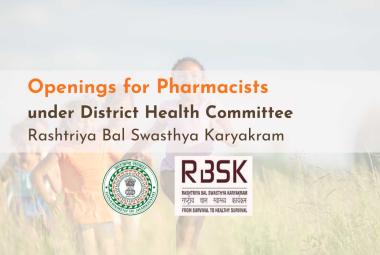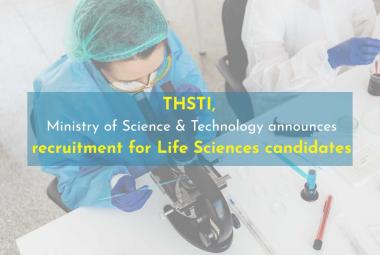ABOUT AUTHORS:
N.V Sateesh Madhav, Abhijeet Ojha, *Dheeraj Fulara
DIT Faculty of Pharmacy,
Mussoorie Diversion Road, Dehradun248009,
Uttarakhand, India
*fularadheerajmpharm@yahoo.com
ABSTRACT-
Buccal drug delivery had lately become an important route of drug administration. The rich in vascularization of oral mucosa and its permeability too many drugs make this route an attractive alternative to the oral and parenteral routes for systemic drug delivery. Drug delivery via the oral mucous membrane was considered to be a promising alternative to the oral route. Sublingual route was a useful when rapid onset of action was desired with better patient compliance than orally ingested tablets. Absorption through the buccal mucosa overcomes premature drug degradation due to the enzyme activity and pH of gastrointestinal tract, avoids active drug loss due to presystemic metabolism (First-pass hepatic metabolism), acid hydrolysis and therapeutic plasma concentration of the drug can be rapidly achieved. In the present review, recent advancements and literature regarding mucoadhesive buccal films is compiled and it suggests that this delivery system can be adopted by various pharmaceutical companies in the future at the large scale because it was the novel frontier in drug delivery technology that provides a very convenient means of taking medication.
REFERENCE ID: PHARMATUTOR-ART-2018

Figure-1
INTRODUCTION-
Buccal delivery of drugs provides an attractive alternate to the oral route of drug administration, particularly in over coming deficiencies associated with the latter mode of dosing. Problems such as high first - pass metabolism and drug degradation in the harsh gastrointestinal environment can be circumvented by administering the drug via the buccal route .Moreover, buccal drug absorption can be promptly terminated in case of toxicity by removing the dosage form from the buccal cavity. It was also possible to administer drugs to patients who cannot be dosed orally. Therefore, adhesive mucosal dosage forms were suggested for oral delivery that included adhesive tablets adhesive gels and adhesive patches. The buccal mucosa permits a prolonged retention of a dosage form especially with the use of mucoadhesive polymers without much interference in activities such as speech or mastication unlike the sublingual route.Buccal films may be preferred over adhesive tablets in terms of flexibility and comfort. In addition they can circumvent the relatively short residence time of oral gels on the mucosa, which are easily washed away and removed by saliva. The continuous secretion of saliva results in rapid removal of released drug and this may desire that the oral cavity should be restricted to the delivery of the drugs, which have a short systemic circulation. Conversely, the thin mucin film, which exists on the surface of oral mucosa, may provide an opportunity to retain for longer time and continuous drug delivery. Moreover, the buccal films were able to protect the wound surface, thus reducing pain and treating oral diseases more effectively. The ideal buccal patch should be flexible, elastic and soft yet adequately strong to withstand breakage due to stress from mouth activities. It must also exhibit good mucoadhesive strength so that it can be retained in mouth for desired duration. The buccal mucosa permits a prolonged retention of a dosage form especially with the use of mucoadhesive polymers without much interference in activities such as speech or mastication unlike the sublingual route.Buccal films may be preferred over adhesive tablets in terms of flexibility and comfort. In addition they can circumvent the relatively short residence time of oral gels on the mucosa, which are easily washed away and removed by saliva. The continuous secretion of saliva results in rapid removal of released drug and this may desire that the oral cavity should be restricted to the delivery of the drugs, which have a short systemic circulation. Conversely, the thin mucin film, which exists on the surface of oral mucosa, may provide an opportunity to retain for longer time and continuous drug delivery. Moreover, the buccal films are able to protect the wound surface, thus reducing pain and treating oral diseases more effectively.
Mucoadhesive drug delivery system in oral cavity7,8
Drug delivery via the membranes of the oral cavity can be subdivided as follows -
1. Sublingual delivery: Itinvolves administration of drug via the sublingual mucosa to the systemiccirculation.The sublingual mucosa surrounds the sublingual gland which is a mucin-producing salivary gland located underneath the tongue. Examples :- GlycerylTrinitrate (GTN) (aerosol spray and tablet in prophylactic treatment of angina.) Brand name:-Susadrin ,Nitrogard.
2. Buccal delivery:The buccal mucosa refers to the inner lining of the lips and cheeks. The epithelium of the buccal mucosa is about 40-50 cells thick .The buccal mucosa was less preferable compared to other oral drug delivery systems because of vary short transit time.Itinvolves administration of drug via the buccal mucosa to the systemic circulation.
3. Gingival delivery:The gingival mucosa hardest muscle of the body.Gingival mucosa retain dosage form for long duration.

A-The sublingual mucosa.
B-The buccal mucosa.
C-The gingival mucosa.
Figure.2
BUCCAL MUCOSA AS A SITE FOR DRUG DELIVERY
The mucosa has a rich blood supply and was permeable to many pharmacologically active agents..There are two permeation pathways for passive drug transport across the oral mucosa: paracellular and transcellular routes. Permeants may traverse these two routes simultaneously, but one route usually is more effective than the other, depending on the physicochemical properties of the diffusant hydrophilic compounds have higher solubilities in this environment. Three different categories of drug delivery fall within the oral cavity: sublingual, buccal, and local. The sublingual mucosa is relatively permeable, giving rapid absorption and acceptable bioavailabilities of many drugs, and is convenient, accessible,and generally well accepted. The sublingual route is by far the most widely studied of these routes. Sublingual dosage form.are most often one of two designs: those composed of rapidly disintegrating tablets and those consisting of soft gelatin capsules filled with liquid drug.Such systems create a very high drug concentration in the sublingual region before they were systemically absorbed across the mucosa. The buccal mucosa is considerably less permeable than the sublingual area, and was generally not able to provide the rapid absorption and good bioavailabilities seen with sublingual administration.

Figure 3.In vivo mucoadhesive behavior of optimized formulation
Overview of the Oral Mucosa
A. Structure
The oral mucosa was composed of an outermost layer of stratified squamous epithelium (Figure 3). Below this lies a basement membrane, a lamina propria followed by the submucosa as the innermost layer. The epithelium of the buccal mucosa was about 40-50 cell layers thick, while that of the sublingual epithelium contains somewhat fewer. The turnover time for the buccal epithelium has been estimated at 5-6 days, and this was probably representative of the oral mucosa as a whole. The oral mucosal thickness varies depending on the site: the buccal mucosa measures at 500-800 µm, while the mucosal thickness of the hard and soft palates, the floor of the mouth, the ventral tongue, and the gingivae measure at about 100-200 µm. . The mucosae of areas subject to mechanical stress (the gingivae and hard palate) are keratinized similar to the epidermis. The mucosae of the soft palate, the sublingual, and the buccal regions, however, are not keratinized . The keratinized epithelia contain neutral lipids like ceramides and acylceramides which have been associated with the barrier function. These epithelia were relatively impermeable to water.
B. Permeability
The oral mucosae in general was a somewhat leaky epithelia intermediate between that of the epidermis and intestinal mucosa. It was estimated that the permeability of the buccal mucosa is 4-4000 times greater than that of the skin .It was currently believed that the permeability barrier in the oral mucosa was a result of intercellular material derived from the so-called ‘membrane coating granules (MCG) . When cells go through differentiation, MCGs start forming and at the apical cell surfaces they fuse with the plasma membrane and their contents were discharged into the intercellular spaces at the upper one third of the epithelium. This barrier exists in the outermost 200µm of the superficial layer. Permeation studies have been performed using a number of very large molecular weight tracers, such as horseradish peroxidase and lanthanum nitrate. When applied to the outer surface of the epithelium, these tracers penetrate only through outermost layer or two of cells. When applied to the submucosal surface, they permeate up to, but not into, the outermost cell layers of the epithelium. According to these results, it seems apparent that flattened surface cell layers present the main barrier to permeation, while the more isodiametric cell layers are relatively permeable.

Fig 4 : Anatomy of oral mucosa
C. Environment
The cells of the oral epithelia are surrounded by an intercellular ground substance, mucus, the principle components of which were complexes made up of proteins and carbohydrates. These complexes may be free of association or some maybe attached to certain regions on the cell surfaces. This matrix may actually play a role in cell-cell adhesion, as well as acting as a lubricant, allowing cells to move relative to one another . Along the same lines, the mucus was also believed to play a role in bioadhesion of mucoadhesive drug delivery systems . Up to 70% of the total mucin found in saliva was contributed by the minor salivary glands. Another feature of the environment of the oral cavity was the presence of saliva produced by the salivary glands. Saliva was the protective fluid for all tissues of the oral cavity. It protects the soft tissues from abrasion by rough materials and from chemicals. The major determinant of the salivary composition was the flow rate which in turn depends upon three factors: the time of day, the type of stimulus, and the degree of stimulation. The salivary pH ranges from 5.5 to 7 depending on the flow rate. At high flow rates, the sodium and bicarbonate concentrations increase leading to an increase in thepH. The daily salivary volume was between 0.5 to 2 liters and it was this amount of fluid that was available to hydrate oral mucosal dosage forms. A main reason behind the selection of hydrophilic polymeric matrices as vehicles for oral transmucosal drug delivery systems was this water rich environment of the oral cavity.
The mucus layer17
The mean thickness of this layer varies from about 50 to 450 µm in humans. It was secreted by the goblet cells lining the epithelia or by special exocrine glands with mucus cells acini.
However, it has the following general composition
1. Water - 95%
2. Glycoproteins and Lipids - 0.5 to 5%
3. Mineral salts - 0.5 to 1%
4. Free Proteins - 0.5 to 1%
Functions of mucus layer18
The Primary functions of the mucus layer are:
1. Protective: Resulting particularly from its hydrophobicity and protecting the mucosa from the diffusion of hydrochloric acid from the lumen to the epithelial surface.
2. Barrier: The role of the mucus layer as a barrier in tissue absorption of drugs and other substrates is well known as it influences the bioavailability of drug.
3. Adhesion: Mucus has strong cohesional properties and firmly binds to the epithelial cell surface as a continuous gel layer.
4. Lubrication: An important role of the mucus layer was to keep the mucosal membrane moist.Continuous secretion of mucus from the goblet cell is necessary to compensate for the removalof the mucus layer due to digestion, bacterial degradation and volatilization of mucin molecules.
Advantages of Buccal Drug Delivery System1,2
The administration of drugs by the buccal route has several main advantages over peroral administration, including the following
* Improves patient compliance by decreasing dosing frequency.
* Better therapeutic effect of short half-life drugs can be achieved.
* Bioavailability enhances despite first pass effect because fluctuations in plasma drug concentration is maintained by continuous drug release.
* Drug release in controlled manner for prolonged period.
* Improve the performance of many drugs, as they are having prolonged contact timewith the mucosa.
* Increased residence time combined with controlled API release may lead to lower administration frequency.
* Tolerance (in comparison with the nasal mucosa and skin) to potential sensitizers.
* It offered a passive system of drug absorption and does not require any activation.
* Provided an alternative route for the administration of various hormones, narcotic
analgesics, steroids, enzymes, cardiovascular agents etc.
* The drug is not subjected to the destructive acidic environment of the stomach.
* The oral mucosa was easily accessible, which ensures that a dosage form can be applied
to the required site and removed easily in case of emergency.
* There was no requirement of medical practitioner to administer the dosage form.
.The ease of administration and ability to terminate drug delivery when required makes it either a potential route or an attractive for drug delivery.
Disadvantages of Buccal Drug Delivery System1,2,3
The main challenges of buccal administration are:
* Limited absorption area- the total surface area of the membranes of the oral cavity available for drug absorption is 170 cm2 of which ~50 cm2 represents non-keratinized tissues, including buccal membrane.
* The barriers such as saliva,mucus,membrane coating granules, basement membrane etc retard the rate and extent of drug absorption through the buccal mucosa8.
* Continuous secretion of the saliva(0.5-2 l/day)leads to subsequent dilution of the drug.
* The hazard of choking by involuntarily swallowing the delivery system is a concern.
Limitations of buccal drug delivery system4
1. Drugs with large dose were difficult to be administered
2. Eating and drinking may be restricted
3. Possibility of the patient to swallow the tablet
4. This route cannot administer drugs, which were unstable at buccalpH.
5. This route cannot administer drugs, which irritate the mucosa or have a bitter or unpleasant taste oran obnoxious odour.
6. Small surface area was available for absorption.
Mechanism of mucoadhesion-
Step 1:-Wetting and swelling of polymers- The wetting and swelling step occurs when the polymer spreads over the surface of the mucosal membrane in order to develop an intimate contact with the substrate. Bioadhesives were able to adhere to with biological tissues by the help of the surface tension and forces that exist at the site of adsorption or contact. Polymers have an affinity for water.

Step 2:-Interpenetration between the polymer chains and the mucosal membrane- In this step the bioadhesive bond formation, the bioadhesive polymer chains and the mucosal polymer chains intermingle and entangle to form semi permeable adhesive bonds. In order to form strong adhesive bonds, one polymer group must be soluble in the other .

Step 3:-Formation of chemical bonds between entangled chains-The types of bonding formed between the chains include primary bonds such as covalent bonds and weaker secondary interactions such as van der Waals Interactions and hydrogen bonds.Both primary and secondary bonds are exploited in the manufacture of bioadhesive formulations in which strong adhesions between polymers are formed.

Mechanism of bioadhesion-
Theories of mucoadhesion10,11,12,15
1-Electronic theory16- Electronic theory was based on the premise that both mucoadhesive and biological materials possess opposing electrical charges. When both materials come into contact, they transfer electrons leading to the building of a double electronic layer at the interface, where the within this electronic double layer determines the mucoadhesive strength.
2-Wetting theory16- The theory based on measuring contact angle between two surfaces.The contact angle of liquids on the substrate surface was lower, then there was a greater affinity for the liquid to the substrate surface. If two such substrate surfaces were brought in contact with each other in the presence of the liquid, the liquid may act as an adhesive amongst the substrate surfaces.
3-Adsorption theory24- Vandar waals forces hydrogen bonds electrostatic attraction or hydrophobic intractions play an important role as far concern with this theory.By this forces mucoadhesive material adhers to the mucus layer.
4-Diffusion theory16- The degree of penetration depends on diffusion coefficent,flexibilty and nature of the mucoadhesivechains,mobility and contact time of polymer chains.For maximum diffusion & best adhesive strength , solubility parameters of the bioadhesive polymer & the mucus glycoprotein must be similar.
5-Cohesive theory- The phenomena of bioadhesion were mainly due to the intermolecular interactions amongst like-molecules.
6-Fracture theory16- The most accepted theory on the mechanical measurment of mucoadhesion.It was based on the forced required to seprate two surface after bioadhesion was established.This theory analyses the maximum tensile stress developed during attachment of the transmucosal drug delivery system .
Adhesion Strength = (E ?/L )1/2
E =Young’s modulus of elasticity
? = Fracture energy
L = Critical crack length when two surfaces are separated
7-Mechanical theory16- In this theory adhesion arises from an interlocking of liquid adhesives into iregularities in the rough surface.Rough surfaces provide an increased surface area available for interaction along with enhanced viscoelastic.
Factors affecting mucoadhesion in oral cavity21-
Polymer Related Factor-
1) Molecular Weight- Polymer must have a high molecular weight upto 100,000 or more.Eg-PEG with MW of 20,000 has little adhesive character ,whereas PEG with MW 2000,000 has improved & superior adhesive properties.
2)Degree of cross linking-Highly cross linked polymers swell in presence of water and retain their structure.Swellingfavours controlled release of the drug and increases the polymer/mucus interaction.But as the cross linking increases, the chain mobility decreases which reduces the mucoadhesive strength.
3)Flexibility of Polymer Chain- This promotes the interpenetration of the polymer within the mucus network.
4)Concentration of the Polymer- An optimum concentration was required to promote the mucoadhesive strength. It depends however, on the dosage form. For solid dosage form the adhesive strength increases with increase in the polymer concentration. But in case of semi solid dosage forms an optimum concentration was essential beyond which the adhesive strength decreases.
5) Spatial Conformation- In spite of a high molecular weight of 19,500,000 for dextrans, they have related adhesive strength to the polyethylene glycol with a molecular weight of 200,000. The helical conformation of dextran may shield many adhesively active groups, primarily dependable for adhesion ,unlike PEG polymers which have a linear conformation .
6)Optimum Hydration- Excessive hydration leads todecreased mucoadhesive strength due to formation of a slippery mucilage .
7) Charge- Anion polymers(high degee of adhesion)>cation>nonionic
Environmental Related Factors-
1)Optimum pH- Mucoadhesion was optimum at low pH conditions. At very elevated pH values, positively charged polymers like chitosan form polyelectrolyte complexes with mucus and exhibit strong mucoadhesive forces .
2) Initial Contact - Between the bioadhesive and mucus layer determines the extent of swelling and interpenetration of the bioadhesive polymer chains.Bioadhesive strength increases as the initial contact time increases.
3)Applied strength - The adhesion strength increased with the applied strength.
4) Disease States- The physiochemical properties of mucus are known to adjust during disease conditions such as common cold, gastric ulcers, and ulcerative colitis, bacterial and fungal infections of the female tract.
Relative mucoadhesive performance of some polymers-
|
Polymer |
Relative mucoadhesive force |
Quality of bioadhesion |
|
CMC |
193 |
Excellent |
|
Carbopol |
185 |
Excellent |
|
Tragacanth |
154 |
Excellent |
|
Sod. alginate |
126 |
Excellent |
|
HPMC |
125 |
Excellent |
|
Gelatin |
126 |
Fair |
|
Pectin |
100 |
Poor |
|
Acasia |
98 |
Poor |
|
Providone |
98 |
Poor |
Characteristics of an ideal mucoadhesive polymer5,6,22
- The mucoadhesive polymer rapidly adherence to mucosa.
- Exhibit strong interaction with the mucinepithilial tissue.
- Good spreadibility ,wetting, swelling & solubility &biodegradibilty properties.
- Possess tensile & shear strengths at bioadhesive range.
- Show bioadhesive properties in both dry & liquid state.
- Having penetration enhancement properties.
- It should be non-irritant to the mucous membrane.
- The polymer must not decompose on storage or during the shelf life of the dosage form.
- It should allow easy incorporation of the drug and offer no hindrance to its release.
- It should allow easy incorporation of the drug and offer no hindrance to its release.
Methods of evaluation- Physicochemical Evaluation:
Thickness: The thickness of film is determined by traveling microscope, dial gauge, screw gauge or micrometer at different points of the film.
Uniformity of weight: Weight variation is studied by individually weighing 10 randomly selected films and calculating the average weight. The individual weight should not deviate significantly from the average weight.
Drug content determination: An accurately weighed portion of film (about 100 mg) is dissolved in 100 ml of suitable solvent in which drug is soluble and then the solution is shaken continuously for 24 h in shaker incubator. Then the whole solution is sonicated. After sonication and subsequent filtration, drug in solution is estimated spectrophotometrically by appropriate dilution.
Content uniformity test: 10 films are selected and content is determined for individual films. If 9 out of 10 films have content between 85% to 115% of the specified value and one has content not less than 75% to 125% of the specified value, then films pass the test of content uniformity. But if 3 films have content in the range of 75% to 125%, then additional 20 films are tested for drug content. If these 20 films have range from 85% to 115%, then the films pass the test.
Moisture content: The prepared films are weighed individually and kept in a desiccators containing calcium chloride at room temperature for 24 h. The films are weighed again after a specified interval until they show a constant weight. The percent moisture content is calculated using following formula.
% Moisture content = Initial weight – Final weight X 100
Final weight
Moisture Uptake: Weighed films are kept in a desiccator at room temperature for 24 h. These are then taken out and exposed to 84% relative humidity using saturated solution of Potassium chloride in a desiccator until a constant weight is achieved. % moisture uptake is calculated as given below.
% moisture uptake = Final weight – Initial weight X 100
Initial weight
Flatness: A film should possess a smooth surface and should not constrict with time. This can be demonstrated with flatness study. For flatness determination, one strip is cut from the centre and two from each side of patches. The length of each strip is measured and variation in length is measured by determining percent constriction. Zero percent constriction is equivalent to 100 percent flatness.
% constriction = I1 – I2 X 100
I1
I2 = Final length of each strip
I1 = Initial length of each strip
Folding Endurance: Evaluation of folding endurance involves determining the folding capacity of the films subjected to frequent extreme conditions of folding. Folding endurance is determined by repeatedly folding the film at the same place until it break. The number of times the films could be folded at the same place without breaking is folding endurance value.
Microscopic studies: Distribution of drug and polymer in the film can be studied using scanning electron microscope. For this study, the sections of each sample are cut and then mounted onto stubs using double sided adhesive tape. The sections are then coated with gold palladium alloy using fine coat ion sputter to render them electrically conductive. Then the sections are examined under scanning electron microscope.
Bioadhesion test
Bioadhesion of polymers can be characterized by testing their adhesion strength by in vitro and in vivo tests. These tests are necessary not only for screening a large number of candidates for mucoadhesive, but also to study their mechanisms. The various methods reported are as follows.
1. In vitro / Ex vivo methods
In vitro tests were initially designed to screen potential bioadhesive with a view to in vivo testing, if successful. Presently, more emphasis is being placed on elucidating the precise mechanisms of bioadhesion because; an evaluation of bioadhesive properties is fundamental to the development of new bioadhesive. The most commonly employed in vitro techniques are:
i. Methods based on measurement of tensile strength.
ii. Methods based on measurement of shear strengths. Other in vitro methods are:
iii. Adhesion weight method.
iv. Fluorescent probe method.
v. Flow channel method.
vi. Mechanical spectroscopic method.
vii. Falling liquid film method.
viii. Colloidal gold staining method.
ix. Viscometric method.
x. Thumb method
xi. Adhesion number.
xii. Electrical conductance.
In vitro tests-
A-Methods determining tensile strength-This method usually measure the force required to break the adhesive bond between the model membrane & the test polymer.It is determined by tensiometer using freshly excised rabbit stomach tissue.A section of tissue having mucus side is exposed & secured on a weighed glass vial placed in a beaker containing USP simulated gastric fluid.Another section of same tissue was placed over a rubber stopper again mucus side exposed & secured with vial cap & small quantity of polymer was placed between two mucosal tissue .

B-Shear stress measurment-The shear stress technique measures the force that causes mucoadhesive to slide with respect to mucus layer in the direction parallel to their plane of contact.Inthis the adhesion test is measure.

C-Fluorescent probe method- Park &robinson studied polymer interaction with conjuctival epithilial cell membrane using fluoresscent probe. The membrane lipid bilayer & the membrane protein were labelled with pyrene& fluoresce isothiocynate.This gave a direct indication of polymer binding & its influence on polymer adhesion.
D-Viscometeric method- A simple viscometric method was used by Hassan & Gallo to quantify mucin-polymer bioadhesive bond strength.
E-Colloidal gold staining method-Park proposed the gold staining technique for the study of bioadhesion. This technique employed red colloidal gold particals which were stabilized by the adsorbed mucin molecule (mucin –gold conjugates). Upon interaction with mucin –gold conugates bioadhesion hydrogel developed a red colour on the surface. Thus the interaction between them could be easily be quntified by measurements of intensify of red colour on hydrogel.
F-Mucoadhesion studies by Novel Madhav Shankar Mucoretentive Study Apparatus20
Novel Madhav?Shankar Mucoretentive Study Apparatus is a novel self designed apparatus by Madhav& Shankar 2008 . It provides a unique platform for mounting the tissue for the mucoretentive study of the dosage device and it produced reproducible data. The study can be conducted by placing a bioplate of 2 mm diameter, 3 cm away from the narrow open end with the help of a loop. The ringer solution is then allowed to pass at a rate of 5 ml/min. The solution is continuously allowed to flow until dislodgement of bioplate occurs. The time of dislodgement of bioplate is recorded.

Madhav Shankar mucoretaintive study apparatus14
2. In vivo methods
The most common in vivo techniques to monitor bioadhesion include:
i. Use of radioisotopes.
ii. Use of gamma scintigraphy.
iii. Use of pharmacoscintigraphy.
iv. Use of Electron paramagnetic resonance (EPR) oximetry.
v. Isolated loop technique
vi. X-ray studies
In vivo tests-
A buccal absorption test-
Which involve swirling a drug solution around the mouth has been estabilished After a known time period, the solution was expelled & subjects rinsed their mouth with buffers.
After a known time period, the solution was expelled & subjects rinsed their mouth with buffers.
Drug solution & buffers were then combined ,analysed for drug content & theamt of drug absorbed estimated.
B-GI transit using radio-opaque marker-In this vivo technique we use a radio opaque marker.E.g-Barium Sulphate,which is encapsulated in Bioadhesive drug delivery system to determine the effect of bioadhesion polymer in G.I transit time.

FUTURE TRENDS-
The future challenge in the development of buccoadhesive dosage forms is to modify the permeability barrier of the mucosa using safe and effective penetration enhancers. Mucoadhesive drug delivery systems available in the market include aftach tablet (Triamcinolone acetonide), suradrin tablet (Nitroglycerin), Buccostem tablet (prochlormperazine maleate). Salcoat powder sprays (Beclomethazone dipropionate. Rhinocort powder spray (Beclomethazone Dipropionate) and sucralfate (Aluminum hydroxide). Though there are only a few mucoadhesive formulations available currently, it can be concluded that drug delivery using mucoadhesive formulations offers a great potential both for systemic and local use in the near future. Various strategies are being employed to achieve oral absorption of peptides. These strategies include manipulation of the formulation (e.g. inclusion of penetration enhancers or protease inhibitors etc.), maximizing retention of the delivery system at the site of absorption, and alteration of the peptide so as to optimize affinity for endogenous transport systems, build in chemical and metabolic stability, minimize the size and optimize the balance between lipophilicity and hydrogen bonding potential.
RECENT ADVANCES:
1. Alginate Raft System: The effects of alginate molecular structure and formulation variables on the physical characteristics of alginate raft systems.
2. Bacterial Cellulose: The effects of pH, salt, heating and freezing on the physical properties of bacterial cellulose natal.
3. Bioadhesive Films: Mechanical characterization of Tetracaine containing bioadhesive films for percutaneous local anesthesia.
4. Biogels: Characterization of binary drug delivery platforms.
5. Blood Plasma Gels: Functional properties of heat induced gels form liquid and spray dried porcine blood plasma as influenced by pH.
6. Bones: Increase in bone calcification in young rats fed bread highly fortified with calcium.
Stylianopoulous, c., Effects of fortification and enrichment of maize tortillas on growth and brain development of rat throughout two generations.
7. Bones Substitute: A new inject able bone substitute combining poly (E-caprolactone) microparticles with biphasic calcium phosphate granules. Injectable bone substitute using a hydrophilic polymer.
8. CarbopolOrganogels :Controlled release of Tetracycline from Carbopolorganogels.
9. Cellulose Films: Aqueous ethyl cellulose dispersion containing plasticizers of different water solubility and hydroxypropyl methyl cellulose as coating material for diffusion pellets.
Properties of sprayed films.
10. Cellulose acetate Films: Mechanical properties of dry and wet free polymer films. Proceeding of the International Symposium of controlled release Bioactive.
11. Lyophilisates
12. Oral Mucosal patches
13. Silicone Intravaginal rings
14. Skin wounds
15. Tablets
16. Poly saccharides gels
CONCLUSION
The buccal mucosa offers several advantages for controlled drug delivery for extended periods of time. The mucosa is well supplied with both vascular and lymphatic drainage and first-pass metabolism in the liver and pre-systemic elimination in the gastrointestinal tract are avoided. The area is well suited for a retentive device and appears to be acceptable to the patient. With the right dosage form design and formulation, the permeability and the local environment of the mucosa can be controlled and manipulated in order to accommodate drug permeation. Buccal drug delivery is a promising area for continued research with the aim of systemic delivery of orally inefficient drugs as well as a feasible and attractive alternative for non-invasive delivery of potent peptide and protein drug molecules. However, the need for safe and effective buccal permeation/absorption enhancers is a crucial component for a prospective future in the area of buccal drug delivery.
Reference
1. MadhavSatheesh NV, Yadav AP. Lip: An impressive and idealistic platform for drug delivery. J Pharm Res. 2011; 4(4):1060-1062.
2. SurenderVerma, MahimaKaul, ArunaRawat, SapnaSaini.An overview on buccal drug delivery system.Int J Pharm Sci Res 2011;2(6):1303-21.
3. Miller NS, Johnston TP. The use of mucoadhesive polymers in buccal drug delivery, Advanced Drug Delivery Reviews 2005;57:1666–91.
4. Patel KV, Patel ND, Dodiya HD, Shelat PK. Buccalbioadhesive drug delivery system: An Overview.Int J Pharm Bio Arch 2011;2(2): 600-9.
- Khairnar G.A.et al., Int.J.PharmTech Res.,2010, 2(1).
5. Jimenez-Castellannos MR. Zia. H., Rhodes CT., Drug Dev. Ind Phar., 1993, 19(142), 143.
6. Patil, et al., Pharma Times, 2006, 38(4), 25.
7. SevdaSenel, Mary Kremer, Katalin Nagy and Christopher Squier., Current Pharmaceutical Biotechnology, 2001, 2, 175.
8. Amir H Shojaei.,Journal of Pharmacy and Pharmaceutical Sciences, 1998, 1(1), 15.
9. Donald L. Wise ,Handbook of pharmaceutical Controlled Release Technology,Marcel Dekker’s Pg .No-168-172255-268.
10. Yie W. Chaine ,NDDS ,Informa Healthcare USA-2009 ,2nd edition ,pg no- 197-229.
11. S. B. Patil, R. S. R. Murthy, H. S. Mahajan, R. D. Wagh, S. G. Gattani,” Mucoadhesive polymers: Means of improving drug delivery” Pharma Times - Vol 38 - No. 4 - April 2006,pg no -25-28
12. Tangri P, MadhavSatheesh NV. Oral mucoadhesive drug delivery systems: A review. International Journal of Biopharmaceutics. 2011; 2(1): 36-46.
13. MadhavSatheesh NV, Uma Shankar MS. A novel smart mucoadhesive biomaterial from Lallimantiaroyalena seed coat.Science Asia.2011; 37: 69–71.
14. MadhavSatheesh N.V., Uma Shankar M.S. 2008. A smart biopolymeric material from Arachis hypogea seeds for formulation of amikacin loaded bioplates. Indian patent application filed. 95.
15. MathiowitzE,ChickeringDE,LehrCM,Bioadhesive drug delivery Systems. Fundamental novel approaches and developments 3rd edition. New York Marcel Dekker; 1999.
16. Smart JD, The basics and underlying mechanisms of mucoadhesion. Adv Drug Del Rev-2005;57:158-68.
17. Slomiany BL,Murty VL, Piotrowski J, Slomiany A. Salivary mucins in oral mucosal defence. Gen Pharmac 1996;27:761-71
18. Hagerstrom h, Edsman K, Stromme M. Low FrequencyDielectric Spectroscopy as a Tool for studying the computability between Pharmaceuticals Gels and Mucus Tissue. J Pharm Sci 2003; 92: 1869-81.
19. Huary Y, Leobandung W, Foss A, Peppas NA, Molecular aspects of muco and bioadhesion. Tethereld structures and site specific surfaces, J ContRel 2000; 65:63-71.
20. MadhavSatheesh NV, Yadav AP. Lip: An impressive andidealistic platform for drug delivery. J Pharm Res. 2011; 4(4): 1060?1062.
NOW YOU CAN ALSO PUBLISH YOUR ARTICLE ONLINE.
SUBMIT YOUR ARTICLE/PROJECT AT articles@pharmatutor.org
Subscribe to Pharmatutor Alerts by Email
FIND OUT MORE ARTICLES AT OUR DATABASE









